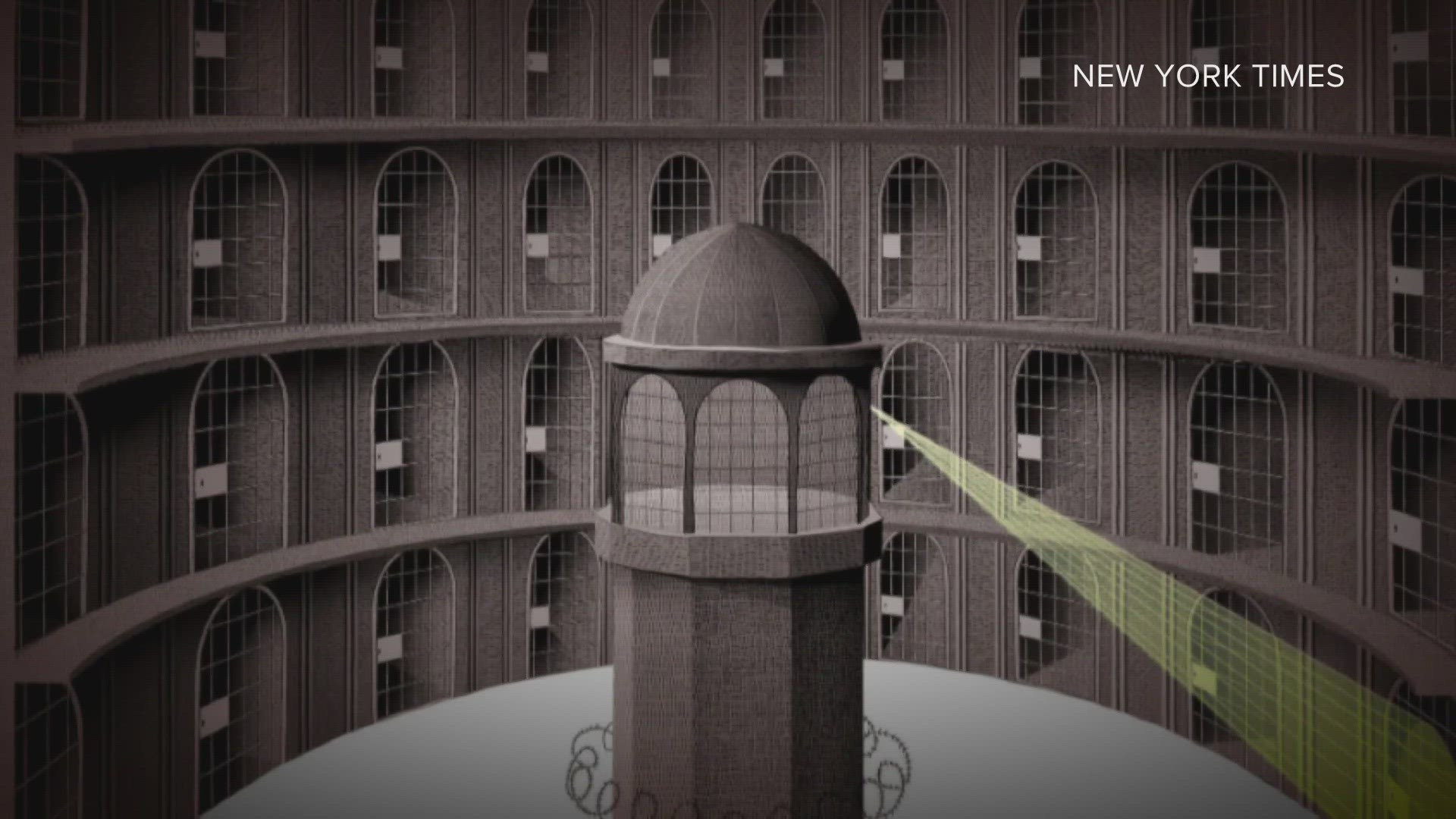NEW ORLEANS — “Chaotic, inhumane, ineffective, overwhelming.”
Those are just some of the words that Illinois-based prison expert Jennifer Vollen-Katz used to describe the jail design known as the panopticon, a concept that dates back to the 1780s. The idea is for inmates to be kept in cells configured in a large circle with a command center in the middle.
The last panopticon prison in the U.S., the notorious F-House at Stateville Correctional Center in Illinois, was closed in 2016 after years of opposition by the John Howard Association, a prison reform organization.
“Not only were we pleased for Illinois to get that closed, we were pleased frankly for the entire country that that form of housing no longer existed,” said Jenny Vollen-Katz, the group's executive director.
Yet as seen in architectural illustrations and blueprints obtained exclusively by WWL-TV, the panopticon is the proposed design for a new jail wing at the Orleans Justice Center in New Orleans. The wing, known as Phase III, has been ordered under the jail's consent decree as a place to house mentally ill inmates.
“Hearing that any jail or prison would be going back to that kind of design is really disturbing and also very puzzling,” Vollen-Katz said.
Vollen-Katz said the design, in which inmates can be seen by nearly all other inmates, amplifies tension, anxiety and lack of privacy throughout the complex. She said that inmates who are acting out or in distress are essentially on display in ways that can trigger copy-cat behavior or negative reactions by the other inmates. She said the design is also stressful for guards.
“It's been shown time and time again to aggravate mental health issues and to generally cause harmful chaotic reaction,” she said.
Federal Magistrate Judge Michael North, along with the consent decree monitors and attorneys for the inmates, re-iterated their support for the Phase III plan at a court hearing two weeks ago. North said the issue has already been resolved after years of litigation and “the time for discussion is long over.”
Despite the legal setback, Hutson is pushing back even harder.
“Here, we have to do something better,” Hutson said. “I just can't emphasize that enough.”
In an attempt to re-visit the issue, Hutson and her legal team wrote a letter to the court calling the panopticon design “inhumane and dangerous.” The letter also takes issue with the increasing cost estimate to build Phase III, which has jumped from $39 million several years ago to about $115 million today.
“This cost equates to $2 million-plus per actual cell,” Hutson wrote.
Along with the letter urging the court to reconsider, the sheriff filed a long-shot legal motion to flat-out terminate Phase III, arguing that she was not a part of the earlier agreement, which was entered into during the tenure of the previous sheriff, Marlin Gusman.
The controversy over Phase III has lingered for years, with the city administration taking a hard stand against it under Mayor LaToya Cantrell. The City Council has hedged its bets, unanimously passing a resolution asking U.S. District Judge Lance Africk to “assist” the city and Sheriff’s Office to “determine the best approach to audit and analyze” the increasing costs. But a subsequent letter to the court, signed by only five council members, stated “it’s time to move on.”
Council Vice-President Helena Moreno and District E Councilman Oliver did not sign the letter. And after Thomas was briefed by Hutson last week, he left with serious misgivings about the Phase III plan, especially the panopticon design.
“Medieval. Total disregard for human dignity,” Thomas said. “Why are we in New Orleans doing a design that prison experts all around the world have said, first of all, should have been outlawed, shouldn't be used, is not the best design?”
Hutson said she will continue to push her position with anyone who will listen. She hopes that includes lawyers with the MacArthur Justice Center, the group that launched the consent decree by filing lawsuits on behalf of the inmates.
“I would challenge the plaintiffs as well. You can be a part of the solution. Instead of this, which they were all a part of building,” she said.
WWL-TV reached out to the MacArthur Justice Center, but several calls went unanswered.
Hearings on Phase Three will unfold in the coming weeks, both in federal court and at City Council.

